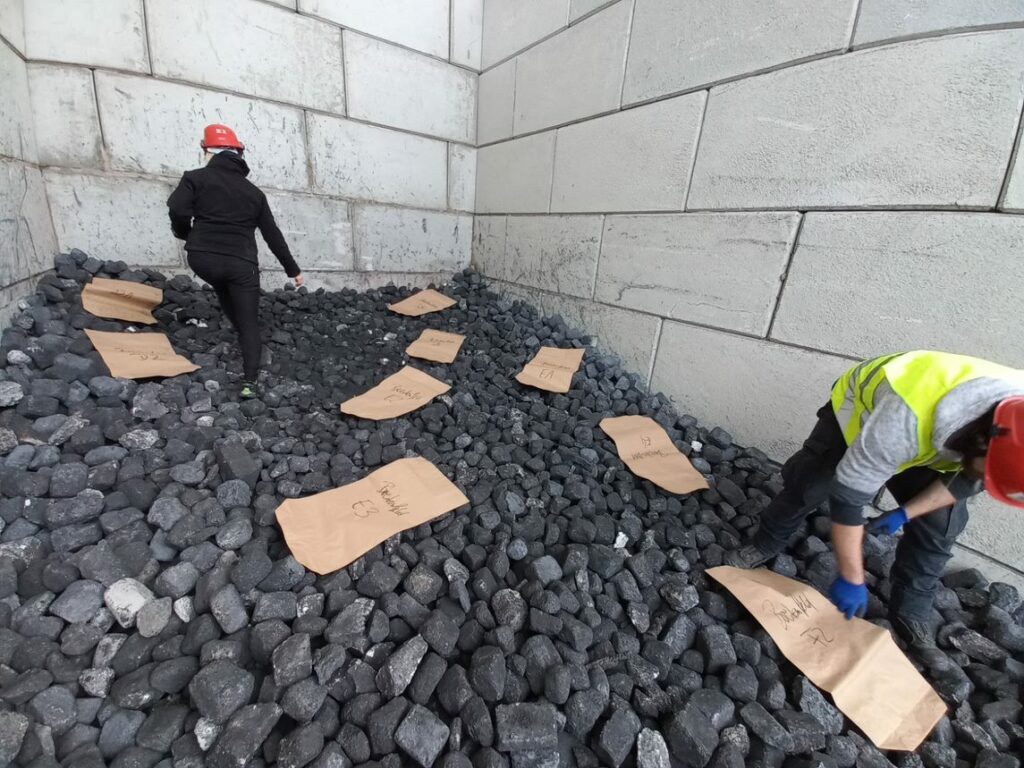Another Aggregate of interest

A while ago, we reported on the sampling of spent refractory material of a rotary kiln and explained that we want to evaluate different properties of interest like the chemical bulk composition or the mineralogical components. While we splitted the samples and send them to our partners in Norway and Germany for further investigations, we here in Austria laid eyes on our next set of samples. This time, the material of a ladle was the next one on the list of industrial high temperature aggregates we wanted to analyse.”
An outsider would not notice, but there is a pretty high material fluctuation in the recycling plant in Mitterdorf, so you have to be relatively flexible when it comes to sampling, or otherwise, the material will be fed to the conveyer belt for hand-sorting, and you have to wait for the next suitable material. On the 21st of September, we had the chance to sample spent refractory material from a steel plant ladle.
The material looked completely different than the one we sampled before. This time the material was black and way smaller. Now and then, you could find pure white bricks coated in fine abraded material from the black ones. Both brick types are part of the ladle lining and represent valuable recycling material. The colour itself hints that the internal mineralogy and the chemical composition should be different from the material of a rotary kiln.
The procedure was almost identical to the one we used when we sampled the rotary kiln material. The only difference was the rainy weather which really could affect the sorting that would be done after we took our samples. So we divided the material into two roofed storage boxes, fanned them out as much as possible, identified the average brick size, used the Austrian Landfill Ordinance (2008) formula to calculate the sample quantity, mentally laid out a grid and sampled the material.
Another difference we noticed was the higher amount of impurities compared to the rotary kiln material. The impurities consist of slag and partly molten scrap metal. At our last sampling campaign, we sampled a total amount of 50 tons and extracted 40 sample bags, each filled with around 25 – 30 kg of sample material. This time we only had a total material amount of 25 tons with an average brick size of 100 – 150 mm, resulting in a sample quantity of 10 -15 kg per sample bag with a total number of 20 different samples that we took this time.
As for the last material we wanted to examine, we again stored away 5 tons of the total to have a reserve for any kind of analysis that we do not think of yet.
Partner

